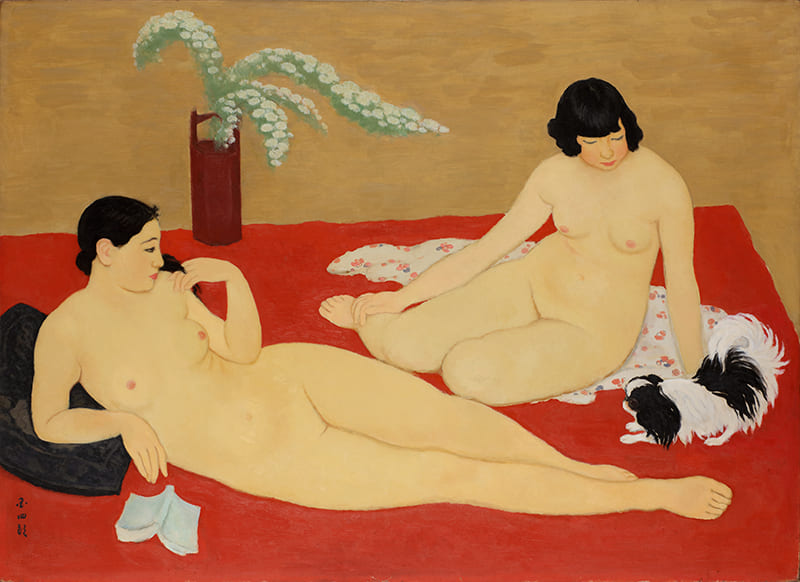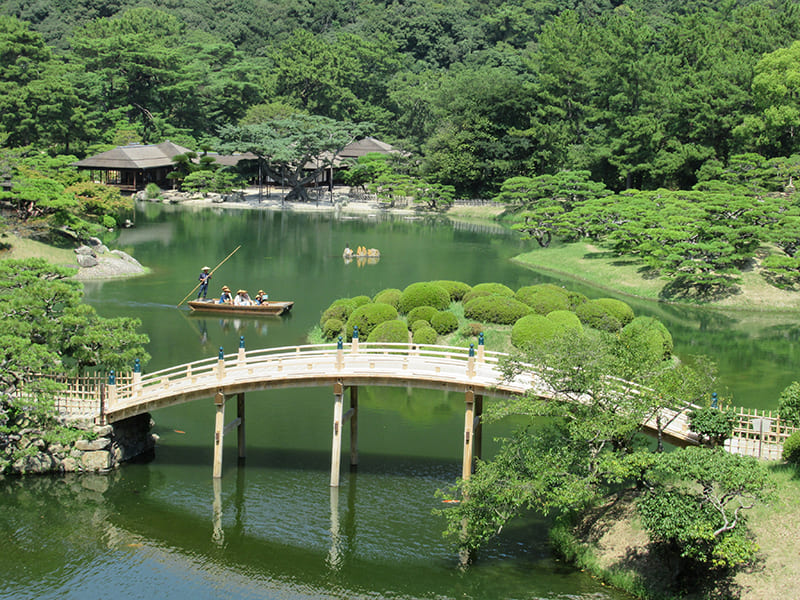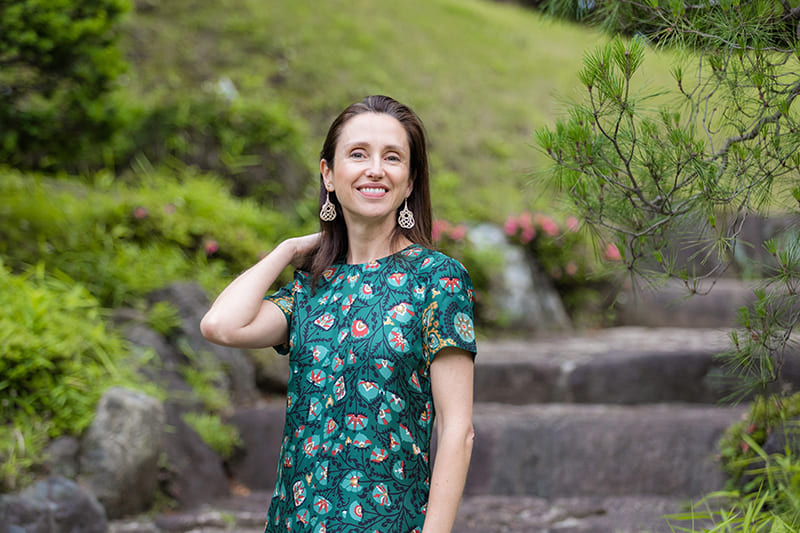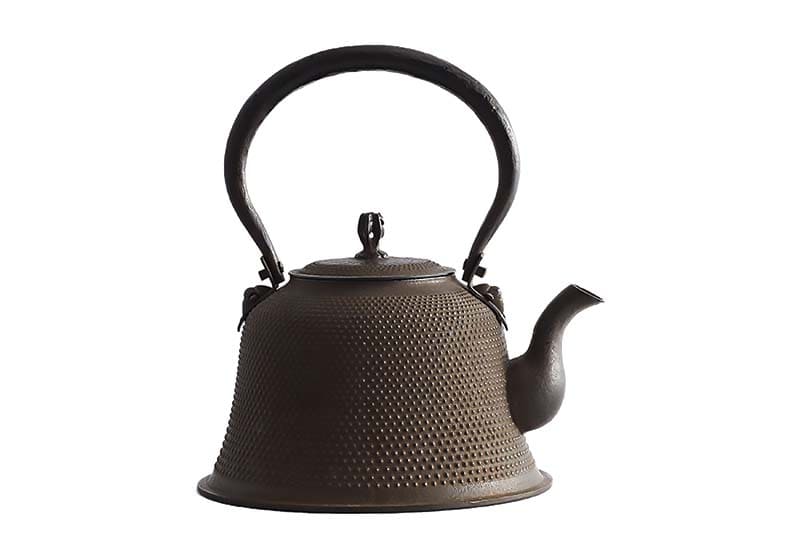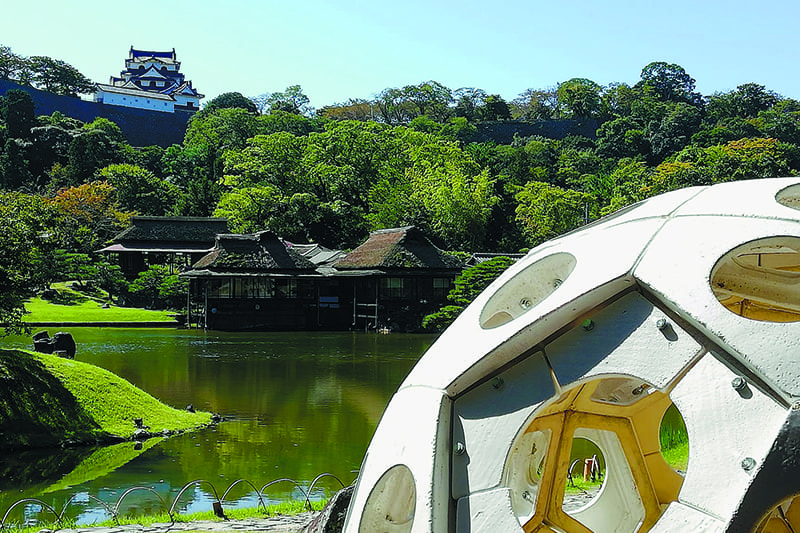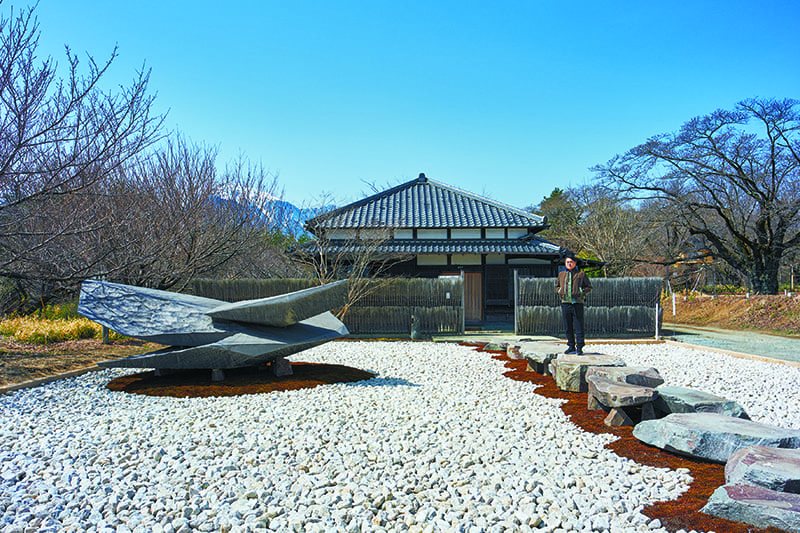July 26, 2024
Thinking about Japanese gardens — from Oregon
INTERVIEW
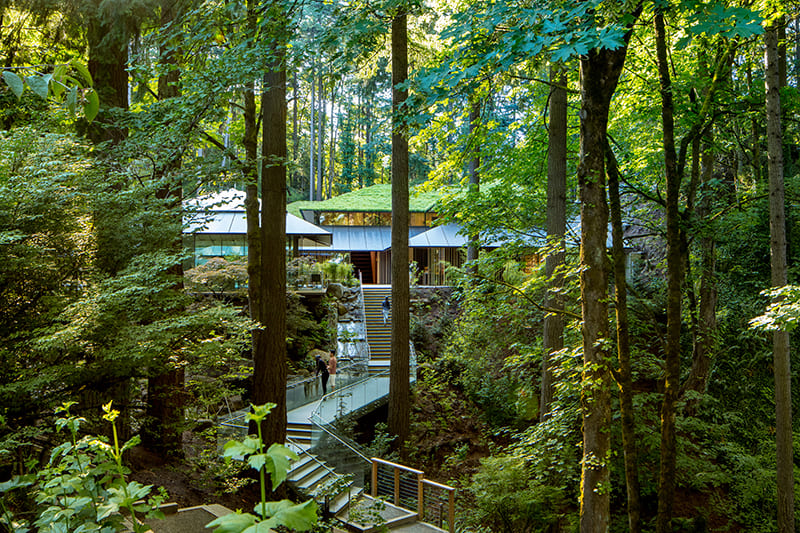
PHOTO: JAMES FLORIO
Portland, Oregon, is known as one of the most environmentally friendly and safe cities in the United States. It is also famously walkable. With good public transportation, Portland has a reputation for urban development that prioritizes pedestrians and bicyclists — so much so that urban revitalization experts from Japan have visited to study the city’s development.
Perhaps less well known is that on a hill overlooking the city there is an authentic Japanese garden that attracts some 500,000 visitors each year. The Portland Japanese Garden was designed in 1963 and opened to the public in 1967 by a foundation established to deepen mutual understanding and bridge the chasm that World War II had opened up between Japan and the United States. The garden was originally designed by landscape architect Takuma Tono (1891-1985), who had earned a master’s degree in landscape architecture from Cornell University. The 2.2-hectare site features eight different gardens.
The curator of culture, art and education at this beloved institution is Aki Nakanishi, who previously served as the cultural affairs specialist at the United States Embassy in Tokyo. As a cultural adviser to Caroline Kennedy and other ambassadors to Japan, he was involved in the planning and management of the United States’ cultural strategy in Japan. Nakanishi came to work at the Portland Japanese Garden when the garden’s CEO, Steve Bloom, asked him to curate the garden’s experiences and events both in the United States and overseas. Given that this would require him to quit his job and relocate his family, he mulled the idea for several years.
“In the end, I accepted this mission because I felt that the Portland Japanese Garden had so much potential for Japan as well. Japanese gardens are so profound because they touch on so many disciplines. I realized that the curation would address not just art, but social issues like architecture, landscape design, race, sustainability and more,” Nakanishi said. “Having eight different Japanese gardens on one large site was also unique. You could call it a ‘museum of gardens’ because you can see so many different styles of garden in one place. I think this kind of garden is valuable because it encapsulates the full range of joy that gardens offer, and it has projects that people all over the world can enjoy, learn from and be inspired by.”
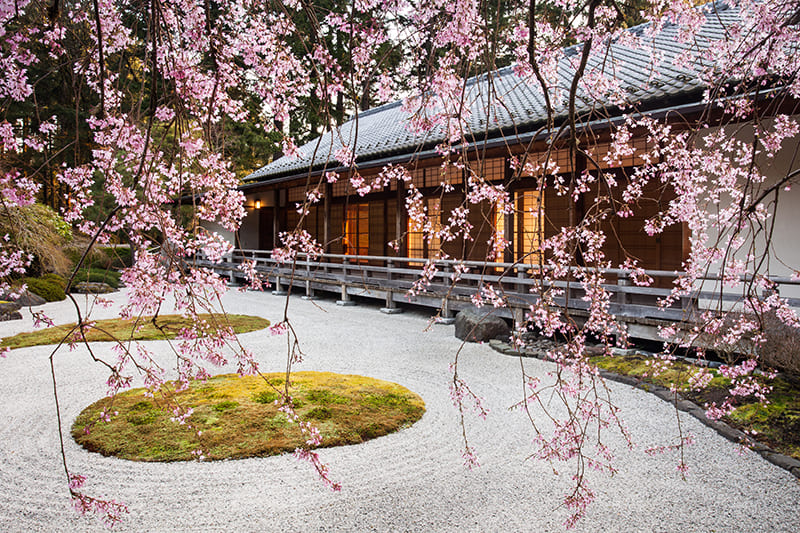
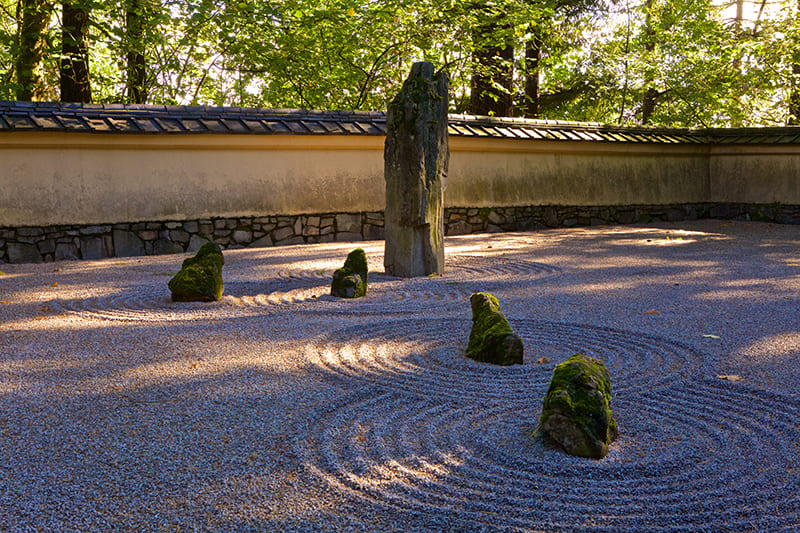
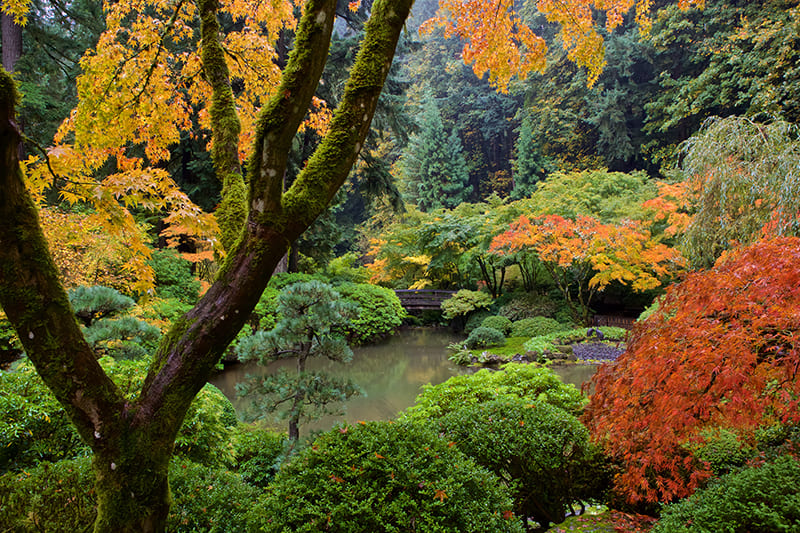
PHOTO: WAYNE WILLIAMS
When asked further about the deep profundity of Japanese gardens, Nakanishi raised two points. The first was the sublimation of practical engineering and maintenance knowledge, cultivated over centuries, into something aesthetic.
“There is a thing called a ‘rain garden,’ which is essentially the use of a pond in flood prevention. Normally, rainwater and sewage management is considered an engineering problem, and so the only goals are effective and efficient water management. But when the Japanese built their ponds, they made them not just as types of flood prevention infrastructure, but as aesthetic objects to be admired. The Japanese also have a unique approach in terms of maintenance to protect trees. When pruning trees and plants, what at first might seem like over-pruning can five years later contribute to the composition of a beautiful garden. This is possible because they are not randomly cutting, but instead applying the cultivation techniques developed in Japan. Nature is ‘read’ to understand what will look best in several years’ time,” he said.
The second aspect of Japanese gardens that Nakanishi raised is that they are a kind of land art that is never finished. “Land art” refers to the construction of art in natural environments like deserts and plains using natural materials such as rocks, soil and wood.
“The gardener creates the garden with all the seasons in mind. As a result, visitors’ impressions will be formed not through a single visit, but by coming back throughout the year and deciding when their favorite seasonal and landscape composition occurs. It is an intellectual experience that helps people sense the changing of the seasons. This is in keeping with the Japanese sense of coexistence with nature. Visitors’ views of Japanese gardens also change when we explain that they have inspired artists like Richard Serra, James Turrell and Isamu Noguchi. People see that it is not just a botanical garden or a nice place for a walk, but a source of creativity. In this way, I see Japanese gardens as land art that is never finished, living art that is constantly changing,” he said.
Of all the visitors to the Portland Japanese Garden, it is the 25-44 age group that is the largest, representing 47% of the total. It is interesting that so many young and active people visit. Perhaps they come here to heal, rest or take stock in response to the stresses of contemporary society. If so, Portland Japanese Garden will always be there, evolving day by day, ready to inspire them.
AKI NAKANISHI
Nakanishi is a cultural leader and expert in public diplomacy with over two decades of international experience in government relations, public communication, and artistic and cultural programming. From 2008 to 2018, he served as a cultural affairs specialist at the U.S. Embassy in Tokyo, where he oversaw a wide range of embassy involvement in cultural, creative and educational activities designed to enhance mutual understanding and provided strategic advice for cultural initiatives by U.S. ambassadors, including John Roos and Caroline Kennedy. Prior to that, he worked in broadcasting and global electronics and as an arts and culture producer, curating exhibitions and producing performing arts programs and art fairs in addition to co-producing literary festivals, and also ran his own nonprofit for regional revitalization across rural Japan.
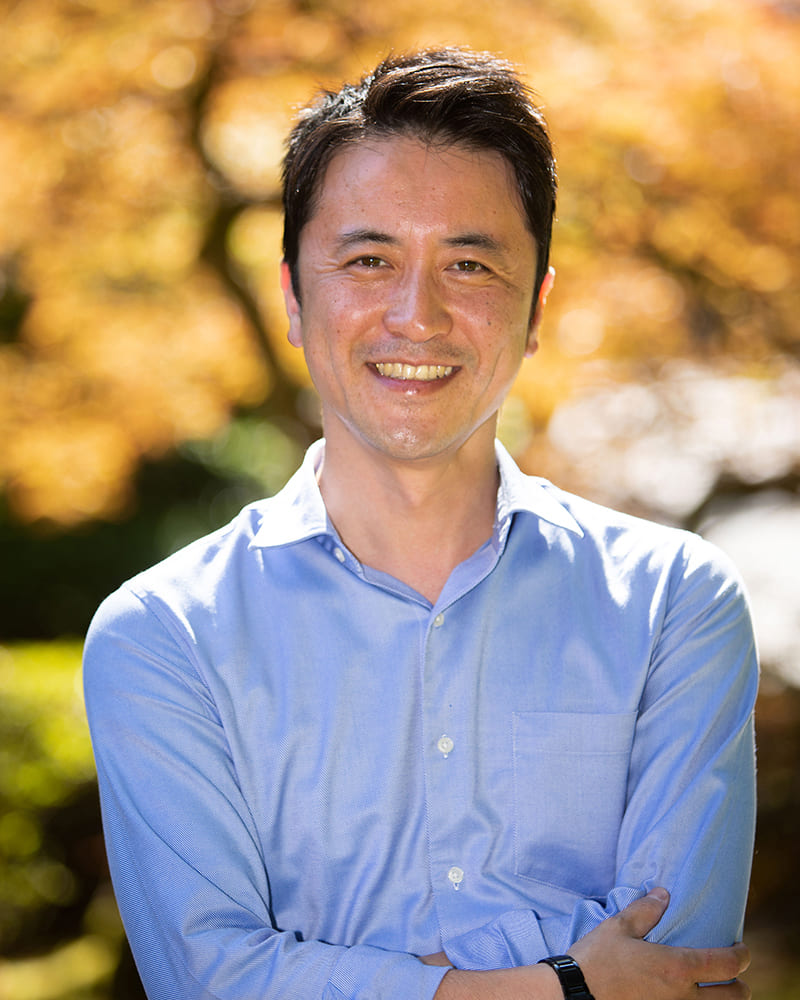
PORTLAND JAPANESE GARDEN
Opened in 1967 in Portland, Oregon, the garden was designed by landscape architect Takuma Tono of the Tokyo University of Agriculture. Located in the West Hills area of Washington Park, which overlooks the city, it includes eight distinct gardens and is one of the most popular cultural attractions on the West Coast, welcoming approximately 500,000 visitors annually, including local residents and tourists.
Address: 611 SW Kingston Avenue, Portland, OR 97205 USA
Open: Summer hours (March 11-Sept. 30) 10 a.m.-5:30 p.m. (last admission 30 minutes before closing); closed on Tuesdays.
Admission: $21.95 https://japanesegarden.org/
〈ポートランド日本庭園〉から日本庭園の魅力を考える。
オレゴン州ポートランドに、年間約50万人が訪れる本格的な日本庭園がある。それが〈ポートランド日本庭園〉だ。第二次大戦での日米両国間の溝を埋めようと1967年に開園。広大な敷地に8つの異なる庭園がある。
この日本庭園で、文化・芸術・教育担当の上席執行役員を務めるのが中西玲人。彼は日本庭園の奥深さを2つ指摘する。一つ目は、何百年に渡り培われてきた“エンジニアリングと美の融合”。もうひとつは、日本庭園とは“完成形のないランドアート”だということだ。
「作庭家は全ての季節を想定して庭を造っています。一年を通じて庭を見ることで、季節の移ろいを感じやすくなり、日本人のもつ自然感や自然との共生を感じることにもなります。またリチャード・セラやジェームズ・タレル、イサム・ノグチといった芸術家がインスピレーションを求めた先のひとつが日本庭園でした。その話を庭園を訪れた人に説明すると、観覧者はここが単なる植物園や散策する場所ではなく、創造性の源なのだ、という風に庭園への見方が変化します」と語る。
Return to Sustainable Japan Magazine Vol. 38 article list page

